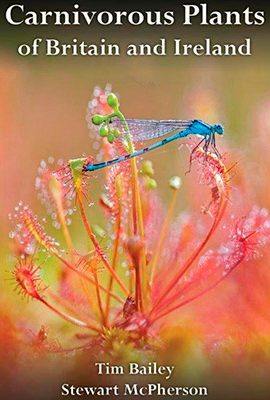Carnivorous Plants of Britain and Ireland
- ISBN: 9781908787231
- Pages: 189
- Images: 205
- Page size: 216 x 152 mm
- Cover format: Softcover with plastic rainsleeve
- Publication date: August 2016.
Redfern Natural History has sold out of this title. A few last copies may be available with our main distributor, NHBS.
Please click the link below and enquire directly with NHBS.
Carnivorous plants include some of the most extraordinary organisms in the vegetable kingdom. Though rare amongst plants as a whole, there are more than 700 species of plant that trap and kill animals for their own nourishment worldwide. Such plants are not restricted to the mysterious depths of tropical forests or inaccessible mountain peaks, but occur all around us. Britain and Ireland are collectively home to more than a dozen native plant carnivores. Though increasingly rare as a result of habitat loss, sundews, butterworts and bladderworts can still be found across the wetlands and pristine watercourses of many parts of the islands.
This fully illustrated guide to the carnivorous plants of Britain and Ireland features over 200 images and documents all recognised native species and their hybrids, as well as the non-native species that have become naturalised to form self-sustaining populations on these shores.
An overview of each group of native carnivorous plant is provided, with line drawings and selected photographs to document their particular characteristics. Each species or hybrid thereof is subsequently addressed within its own entry that includes a variety of illustrations of the plant, a detailed description, range map, habitat photos, and, where relevant, notes of interest about the plant within the context of Britain and Ireland. The history of carnivorous plants, a story that involves none other than Charles Darwin himself, as well as their evolution, is discussed in detail. Finally, some of the issues facing carnivorous plants on these shores is discussed, followed by a selection listing a broad selection of resources, including carnivorous plant nurseries and horticultural groups, that are bound to be of interest to those who wish to see them in the field, or cultivate them in their own homes.














